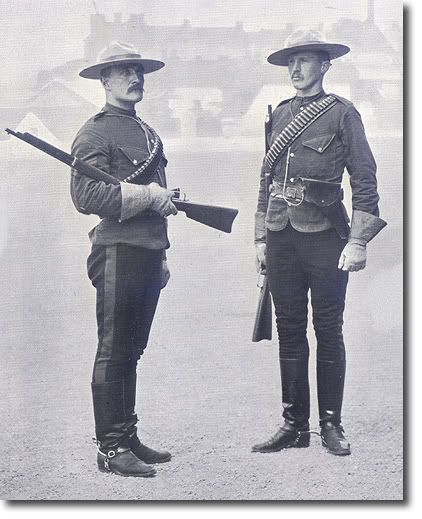 For many years I have been entranced by the stories surrounding the Royal Canadian Mounted Police and a predecessor unit, the North West Mounted Police. The idea of the lone Mountie (trooper) patrolling vast reaches of the rugged Canadian heartland with his odd mix of English and American firearms simply caught my imagination. Canada has some beautiful country and I could easily imagine myself and my dog team out in the middle of that wild country.
For many years I have been entranced by the stories surrounding the Royal Canadian Mounted Police and a predecessor unit, the North West Mounted Police. The idea of the lone Mountie (trooper) patrolling vast reaches of the rugged Canadian heartland with his odd mix of English and American firearms simply caught my imagination. Canada has some beautiful country and I could easily imagine myself and my dog team out in the middle of that wild country.Look at these fellows on the left. Fit, proud, why wouldn't I want to emulate that rugged individualism in service. Note that these fellows, as are the men in the next photo, are holding the 1876 SRC!
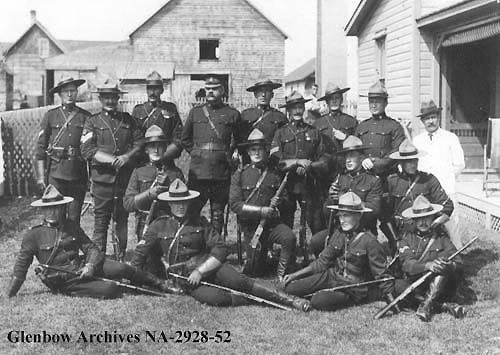 Of course the reality of the times was different. Mounties often worked together, sometimes in rather large (for Canada) units. They not only patrolled the back country but kept order in towns and along routes to the gold fields and they suppressed insurrections. I'm sure that the 1876 Saddle Ring Carbines (SRCs) that they carried were well worn for a reason! Still, I wanted one of those carbines.
Of course the reality of the times was different. Mounties often worked together, sometimes in rather large (for Canada) units. They not only patrolled the back country but kept order in towns and along routes to the gold fields and they suppressed insurrections. I'm sure that the 1876 Saddle Ring Carbines (SRCs) that they carried were well worn for a reason! Still, I wanted one of those carbines.Back in the day, Winchester was producing the very popular 1873 rifle and carbines which were chambered for the .44 WCF (aka .44-40) cartridge which moved a 200-220 gr. bullet at about 1200 fps. Experienced hunters know that this isn't exactly the first choice for game such as elk, bison or grizzly bear. Ned Roberts reports in his "The Man and the Boy" stories how his .44-40 was not nearly as good as his .45 muzzleloading double rifle in killing black bear due to the heavier bullets and larger powder charge of the "old fashioned" gun. So, hunters out in the western US were demanding and buying rivals of the Winchester just for hunting. Winchester wanted to compete in the marketplace and hence the 1876.
Produced from 1876 until 1886 approximately 63,871 1876s of all types were built. The last 1876 rifle left the factory in 1897 and was likely made up of various unused parts. Most popular among collectors (and bringing the highest prices) are the SRCs and the Express rifles. Some of this is due to the relative rarity of the two types. E.g. only 1600 SRCs were produced for the NWMP and at one point they reported only 970 some were functional! The English Express rifles (those in .50-95 often referred to as "cat guns") are even more rare.
Like all Winchesters of the era, a multitude of options were available. Some were produced in one configuration and returned to be modified (adding the dust cover to early guns was one popular modification) to another configuration. In some cases, they were pulled from stock and modified to meet an order. Add to that all the "parts guns" that were made up after regular production ceased in 1886 and one should expect a startling array of variations.
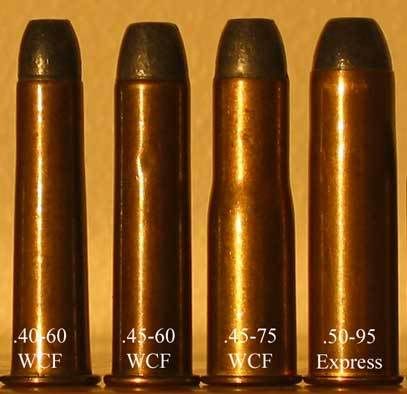 Longer (and heavier) than the 1873 but still using the same basic action design, the 1876 (called the Centennial because it was introduced in the 100th year of the USofA) couldn't handle the .45-70 Government cartridge. Winchester's fix was to use a fatter, bottle-neck cartridge of .45 caliber using a lighter bullet to nearly match the .45-70-405 cartridge's terminal ballistics. This it did. Winchester later produced the 1876 also chambered for 3 other cartridges as shown. Of course my gun had to be a .45-75 as were the NWMP guns. Unfortunately, this will make brass and ammunition difficult to find and more expensive than the .45-60 which can be formed from the cheap .45-70 Government cartridge.
Longer (and heavier) than the 1873 but still using the same basic action design, the 1876 (called the Centennial because it was introduced in the 100th year of the USofA) couldn't handle the .45-70 Government cartridge. Winchester's fix was to use a fatter, bottle-neck cartridge of .45 caliber using a lighter bullet to nearly match the .45-70-405 cartridge's terminal ballistics. This it did. Winchester later produced the 1876 also chambered for 3 other cartridges as shown. Of course my gun had to be a .45-75 as were the NWMP guns. Unfortunately, this will make brass and ammunition difficult to find and more expensive than the .45-60 which can be formed from the cheap .45-70 Government cartridge. When the Parliament of the Dominion of Canada authorized the North West Mounted Police on May 23, 1873, to stop the liquor traffic among the Indians, they had to have rifles. The single-shot Snider-Enfield breech loader was sufficent cause for them to want a replacement and 50 of the 1876 Saddle Ring Carbines (SRCs) were tried in service. These were acquired through the I. G. Baker Company and 50 were in use by 1878. In 1880 another 100 guns were received. 300 of the SRCs came in the 1882 order and another 100 in 1883. In 1885, the largest group of SRCs was received by the NWMP, that being 446 guns. More were likely purchased but the records are incomplete. The marking shown in the photo to the right (as on the reproduction) wasn't uniformly applied so it might not be legible and some carbines don't have it at all. Later carbines had the "Spanish meter" sight which is very similar to the "military wind gauge" sight but not identical. Range markings on this sight are in meters. My reproduction has this sight as well as the NWMP stock stamp.
When the Parliament of the Dominion of Canada authorized the North West Mounted Police on May 23, 1873, to stop the liquor traffic among the Indians, they had to have rifles. The single-shot Snider-Enfield breech loader was sufficent cause for them to want a replacement and 50 of the 1876 Saddle Ring Carbines (SRCs) were tried in service. These were acquired through the I. G. Baker Company and 50 were in use by 1878. In 1880 another 100 guns were received. 300 of the SRCs came in the 1882 order and another 100 in 1883. In 1885, the largest group of SRCs was received by the NWMP, that being 446 guns. More were likely purchased but the records are incomplete. The marking shown in the photo to the right (as on the reproduction) wasn't uniformly applied so it might not be legible and some carbines don't have it at all. Later carbines had the "Spanish meter" sight which is very similar to the "military wind gauge" sight but not identical. Range markings on this sight are in meters. My reproduction has this sight as well as the NWMP stock stamp.Now that I've received my gun I can tell you a little bit about it. The rifle weighs 8-1/2 lbs, has a 22 inch barrel and is otherwise as described. Of course it has the Italian proof markings but they are on the bottom of the receiver. Also on the receiver bottom are the serial number and rifle catalog number. The cartridge/chambering is marked on the barrel between the rear of the back sight and forward edge of the receiver. The barrel is also marked with the patent dates and the importer and maker name. Some folks might not appreciate their location or form but they are pretty unimportant to me.
The finish of the gun is pretty good. The oiled finish on the wood (walnut?) stock is average and seems to be in keeping with the original guns. Only the made-for-the-English guns had varnished furniture. The bluing is even and looks pretty good. There is a finish flaw on the loading gate where the rifle was loaded and test fired. This is mostly due to the different material/metal used for the spring steel loading gate. It should eventually wear to look like an original. The finger lever latch is very stiff. I haven't been able to turn it into position yet. Then again, I'm not forcing it and it isn't used when shooting.
 |
| Spanish Meter Sight |
 Reloading/handloading is almost a requirement with the .45-75. Brass is the most critical and difficult to find component. There is properly headstamped brass out there. However, the influx of reproductions has created a surge in demand and stripped the market of most of this brass. If you find cases it might be a good thing to buy them then and there.
Reloading/handloading is almost a requirement with the .45-75. Brass is the most critical and difficult to find component. There is properly headstamped brass out there. However, the influx of reproductions has created a surge in demand and stripped the market of most of this brass. If you find cases it might be a good thing to buy them then and there.Of the properly headstamped brass, Venturino reported that the Bertram brass (which came un-necked) had to be reamed and fire-formed before use. I understand the the Bertram brass now comes formed. His fireforming load was 12 gr. of W231 under a .457" roundball. Mr. Venturino also notes that COL is critical. You can't be very far off before experiencing feeding problems.
Jamison International made a run of .45-75 brass and supplied both Buffalo Arms and Ten-X with the brass they use in making their ammunition (note: Ten-X is now using Bertram brass with a corresponding rise in cost). It has a good reputation for working in original and the Chapparal reproductions. Unfortunately for the .45-75 shooter, Jamison has some big government defense contracts and is concentrating on supplying those now and for the forseeable future. Usable brass can be made from several other currently manufactured cases.
The cheapest of these, although it is a seasonal production item, is .348 Winchester brass. Nonte says to do this: "Expand neck to hold .456" bullets: Trim to 1.88" length; Size full length; Fire form; use .456" bullets" but it is a bit more complicated than that. The details are what will get you on this and you can lose quite a bit of brass in the forming if you don't pay attention to the details. Venturino addresses this in some detail in Loading Leverguns of the Old West.
Brass can be had in two ways. One is that .348 Winchester cases can be formed by full length sizing them in a .45-75 die.
Venturino also says that these will get the shooter by, but are not perfectly correct for either the Model 1876's chamber or its extractor. The cases may form a slight bulge about 1/4 inch ahead of the rim, and sometimes an extracted case will fall back on top of the cartridge lifter instead of being ejected from the action. So, I don't know if results will be entirely satisfactory for all shooters in all guns. I think that you can do it relatively easily it being necessary only to trim to length, form, fire-form and load and the cases work in my carbine.
Paco Kelly gives his instructions thusly:
It is not a hard conversion because the .348 case is smaller by a hair in all dimensions except length. The only catch I found was after trimming when running the cut down .348 case thru the 45/75 die; first do it without the primer/neck sizer rod, then the second time do it with the rod in. that way you remove the small part of the tighter neck left after trimming without ruining the case. Also use a super slick case lube inside the neck area.Another brass source or alternative cases for forming the .45-75 are the .50-70, .50 Alaskan and .50-90 Sharps cases from Starline. I think the .50-70 forms up as too short (see far right case in the photo below) but the .50 AK case is 2.1" long and requires trimming only .22" and is cheaper than the much longer .50-90 Sharps.
The 45/75 case length is 1.895" so the .348 case must be cut back to 2.0 inches. you need the extra 1/10th of an inch length because the case will shrink slightly in fireforming. so remove approx. .250" off the .348 case neck, chamfer well. Then run it thru the 45/75 die as described above.
The other dimenstions of the .348 case are very close to those of the 45/75. .348 rim diameter is .603", the 45/75 rim diameter is .616", the head diameter (just above the rim) of the .348 is .547" and the 45/75 is .560". the difference in size in both these measurements for the two above is about the same .013", the thickness of a thick human hair. So no problem.
Just like the rim thickness of the .348 is 065" and the 45/75 is .070" which is less than half a human hair difference. So then use a fireforming load. The .348 cases's beauty is its strength once made then it will last forever at 45/75 pressures. Remember, once fireformed the cases set the resizing die so it doesn't touch the new shoulder, ever.
45/75 CASE DIMENSIONS...
CASE LENGTH 1.895"
HEAD DIA. .560"
RIM DIA. .616"
RIM THICK .070"
NECK LENGTH.550"
CASE OVERALL LOADED LENGTH 2.25" CASE HOLDS 5 CCs OF WATER
Here's some dimensional info.
| .348 Win | .50 Alaskan | .50-90 Sharps | |
| Rim Diameter | .603" | .6015" | .651" |
| Rim Thickness | .0665" | .067" | .064" |
| Case Head Dia | .546" | .545" | .5585" |
Ok, to summarize the steps...
1 - trim .50-90 or .50 AK case to 1.90" using tubing cutter. Be careful because technique is required here as well.
2 - lube the case.
3 - run the case into the .45-75 full-length sizing die.
4 - anneal
5 - run the case through the expansion die
6 - remove lube (I use alcohol pads, I like ALL the lube off my cases).
7 - final trim
8 - LOAD!
Properly lubricated, a .50-90 case trimmed to 1.88" and run through the Lee full-length sizing die lengthens enough for a final trimming back to 1.88" but requires no fire-forming. Once a quantity of cases is made up one can do as Paco suggests and reset the die to just resize the neck (partial full-length resize) thus lengthening brass life. One important note about the .50-90 cases is that the rim diameter must be turned down to function through the magazine tube.
As to sizing it bears repeating that the shoulders in my chamber seem to be forward of those in the sizing die. This could result in working the brass excessively. I'm thinking that the rifle manufacturers used the original chamber dimensions from original rifles and the die makers used the cartridge dimensions as published by Winchester and, as with many BP cartridges of the time, there's some slop to allow for reliable functioning despite fouling. I will probably partial full-length size these cases. If you look at the 2nd and 3rd case from the left in the below photo you can see just what we are talking about here... (click on the photo to go to a larger version) The fired cases have a different shoulder configuration.
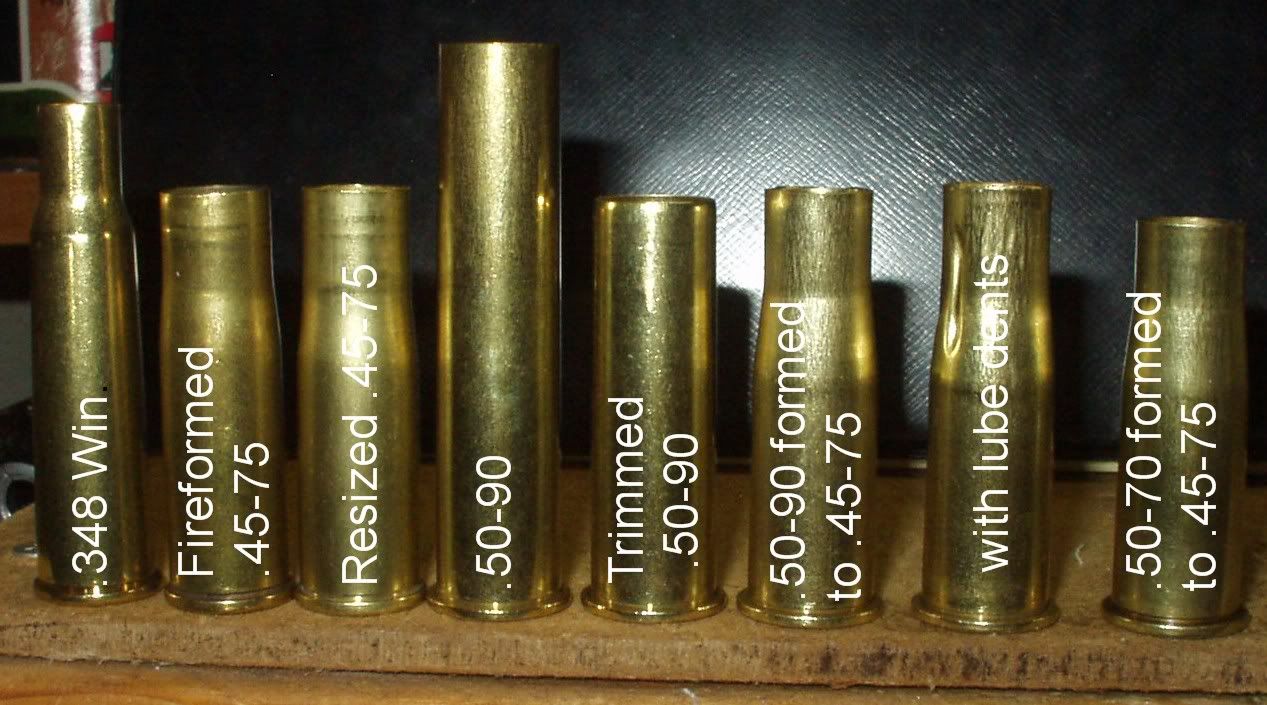 Anyway, dies are needed to work that brass. As I write this the Lee Pacesetter 3 die set is $25.99. Lyman's Classic set goes for $41.99, RCBS wants $229.99 for theirs. RCBS has the forming die set for .348 to 45-75 for $412.99. CH Tool & Die offers the 45-75 3-die set (includes FL sizer, expander and seater) for $101.45. For forming 45-75 brass from .348W, CH sells three step sized expander plugs for $13.30 each and $8 shipping. The expander die body only is $13.30. That is a total of $61.20, incl. shipping for the complete form die set.
Anyway, dies are needed to work that brass. As I write this the Lee Pacesetter 3 die set is $25.99. Lyman's Classic set goes for $41.99, RCBS wants $229.99 for theirs. RCBS has the forming die set for .348 to 45-75 for $412.99. CH Tool & Die offers the 45-75 3-die set (includes FL sizer, expander and seater) for $101.45. For forming 45-75 brass from .348W, CH sells three step sized expander plugs for $13.30 each and $8 shipping. The expander die body only is $13.30. That is a total of $61.20, incl. shipping for the complete form die set.Bullets are, of course, also a requirement. I was planning to use the Lyman 457122 (I understand that the FP mold number was 457192 and the HP is the 457122) from Mt. Baldy Bullets but will likely cast them myself. This is a hollow point, plain base bullet and 330 gr. but is of the correct length with the crimp groove in the correct place. I went ahead and purchased this mold and have high hopes for both the HP version and perhaps a solid/flat point version. The Lyman 457122 HP weighs 336 gr. cast of 1/20 alloy and as somebody else noted would, if not a hollowpoint (that is the Lyman 457192), duplicate the original bullet very closely. the good news is that we were able to get together a limited run of the Lyman 457192 and Lyman will be using the original cherry. Now that I've received my Lyman 457192 I'll be casting some bullets soon.
Venturino tried the RCBS 45-300FN and RCBS 45-325FN the latter of which is about the best weight 345 gr. cast from 1/20 alloy. BUT he says he got groups measured in FEET! One has to wonder why. I think .458" bullets are more likely correct. Venturino says that even the old originals all had .457" groove diameter. and so I've got some on the way from various sources. Other possible molds for this rifle are Lee's 457-340-F and 457-325-F. I've got one of the latter which I received via Chris C. They seem to do well but I've not yet done any group shooting. Will be switching to SPG to lube all bullets when my current stick of lube in the sizer runs out. Until then the cast bullets I lube will be used with smokeless only.
A short note about lube. Some correspondents are telling me that 1.5-1.7 gr. of lube will work with blackpowder. I suggest switching to SPG as that lube will work with all possible powders and simplify bullet preparation.
Powder is another requirement. I plan on using IMR SR4759, AA5744, IMR 3031, IMR or H-4198 and good old black powder. The action will not permit nor will I try to push velocities above original velocities. That would probably be 1200-1300 fps in the short 22 inch carbine barrel. I know that there is a lot of discussion out there about the choices of powders for this cartridge with some decrying the use of any smokeless powders and even some foolhardy individuals pushing the envelope. It seems to me that the loads used should not exceed 18K CUP although Brian Pearce expresses a different opinion in Lyman's 49th edition. Therein he states that the modern reproductions (he uses Chaparrals) 28K CUP is the upper limit. One should be able to duplicate original velocities with like weight bullets and thus equal original performance. That should be good enough for deer and black bear even if the ballistics aren't impressive by today's standards.
Crimping is another concern particularly for shooters using original bullets over smokeless powder. Why? Because the original bullets are designed to be crimped over the front band and the bullet supported by a case full (and compressed) charge of black powder. Smokeless won't fill the case and some fear that the bullet will be set back in the magazine resulting is an unintended and disastrous pressure increase. Orville C. Loomis in his article, "Shooting the .45-75 Model 1876" in the Summer 2001 issue of Blackpowder Cartridge News says that the crimp made by his original tool is very similar to that made by the Lee Factory Crimp Die (FCD). That being the case, one can order a FCD from Lee for less than $30. Chris C., Grizzly Adams and I have ours.
Suggested Loads (these come from various sources including Cartridges of the World, The Home Guide to Cartridge Conversions, The Legacy of Leverguns, Shooting Leverguns of the Old West, Blackpowder Cartridge News)and Lyman Reloading Handbook, 49th ed. however, I am not responsible for either the data presented or for your use thereof. You are on your own as to what is suitable and safe. Many experts recommend only blackpowder be used in original rifles and the reproductions are so new that I've not seen any comments on the subject from commonly accepted authorities.
| Bullet | Weight | Powder | Charge Weight | Velocity | Energy |
| Lyman 457122 | 330 | 2400 | unknown | unknown | |
| Lyman 457122 | 330 | XMP5744 | 1280 | 1274 | |
| Lyman 457122 | 330 | IMR4198 | 1310 | unknown | |
| Lyman 457122 | 330 | AA2015 | 1508 | unknown | |
| Lyman 457122 | 330 | Trail Boss | 1212 | unknown | |
| Lyman 457122 | 330 | H4895 | 1480 | unknown | |
| Lyman 457122 | 330 | Triple7 FFG | 1307 | unknown | |
| Lyman 457122 | 330 | GOEX FFg | 1442 | 1524 | |
| Liberty 458-300FP | 350 | IMR 3031 | unknown | unknown | |
| Lead | 300 | IMR SR4759 | 1300 | 1126 | |
| Hornady HP | 300 | IMR SR4759 | 1400 | 1306 | |
| Lyman 456192 | 350 | IMR 4198 | 1380 | 1480 | |
| Lasercast FP | 300 | IMR 3031 | unknown | unknown |
I now have quite a bit of ammunition together and need to do more shooting! I've had the gun out shooting the fireforming loads as well as a few using bullets from an original Winchester mold sent to me by Grizzly Adams. Those bullets weighed 364 gr. lubed and sized and both they and my fireforming loads using 300 gr. jacketed bullets I normally use for the .45-70 seemed pretty accurate. While I didn't shoot them at targets I did use the crotch of a 3" diameter Sycamore about 80 yards distance on the upper bank of Mom's farm pond. This is a tree I'm going to have to take down anyway so topping it with the NWMP carbine was no problem for the environment and it was no problem with the rifle either. The sights held for horizontal dispersion as I could see the tree shake with every round but it was a bit difficult with that sighting point and the sights to hold the vertical. Now that I have a stock of 20-1 alloy, I'm looking to get some more bullets cast and take my current stock of 500+ cases and really give the gun a workout.
Because of the popularity of NCOWS and SASS cowboy action shooting and reenacting, Chaparral and Uberti have decided there is a market for reproduction rifles and carbines, and some producers have stepped in the breech as it were and offered the things necessary to cartridge reloading. Many resources can be found on the net. Here are a few.
On-line articles on the 1876 Winchester:
- The Winchester Model 1876 by Kirk Durston
- John Boy's info on forming and loading with BP
- Winchester Toggle Link 101 by Larsen E. Pettifogger
Books on the 1876 Winchester:
- The Winchester Book by George Madis
- Shooting Lever Guns of the Old West by Mike Venturino
- Winchester by R. L. Wilson
- Winchester Lever Action Repeating Firearms Volume 1 The Models fo 1866, 1873 and 1876 by Arthur Pirkle
Sources for all things 1876 Winchester:
- Buffalo Arms - brass, loaded ammunition (smokeless and blackpowder), bullets, dies, rifles
- CH Tool and Die - dies
- GAD Custom Cartridges - loaded ammunition
- Graf & Sons - brass, dies
- Midway USA - brass, dies, molds
- Mount Baldy Bullets - Lyman 457122 cast bullets lubed with SPG
- Nevada Western Firearms - exclusive sellers of the NWMP carbines in the USofA.
- Old West Reproductions - custom, authentic copy of NWMP saddle scabbard
- Ten-X Ammunition - loaded ammo (smokeless and Triple-7)
Please send your corrections, comments or additions to me, Hobie via e-mail.
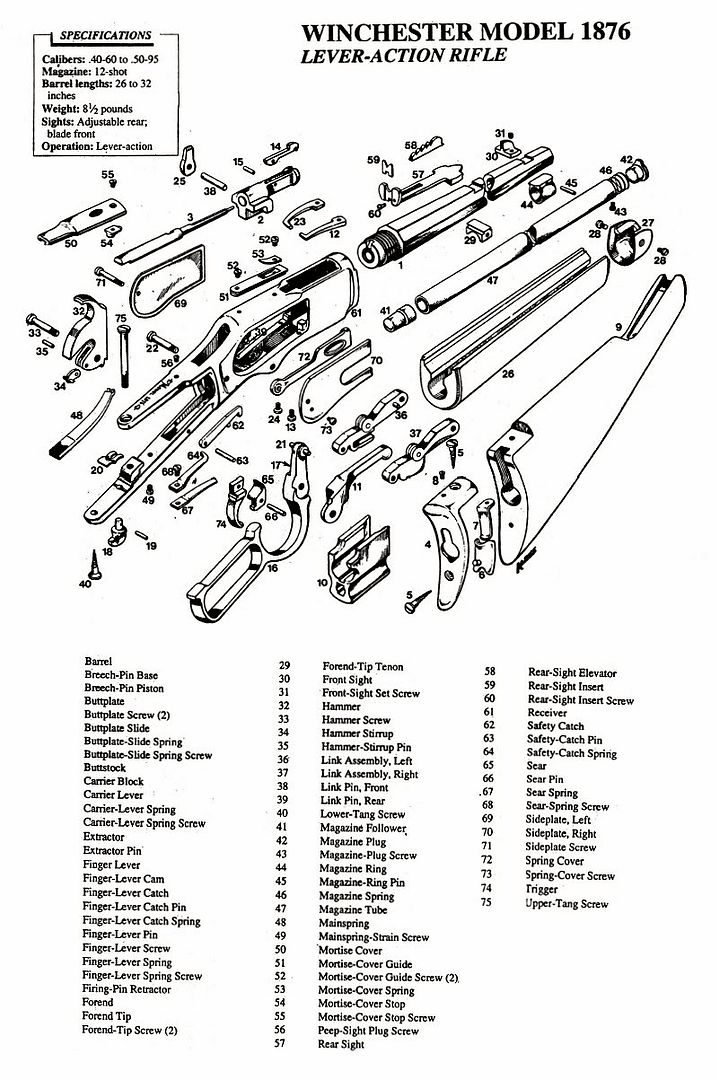
UPDATE -- Rowdy Fulcher has made a neat video concerning his 1876 rifle. It is worth a look and posted here for your enjoyment.



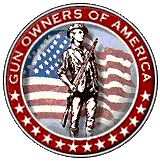






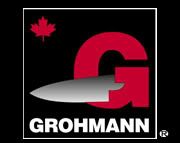
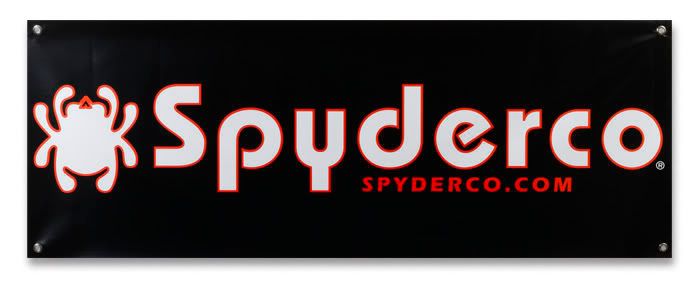

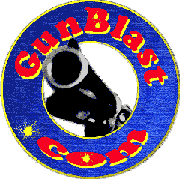








1 comment:
Hiya Hobie
40 grains of Somchem S335 (burn rate close to H322 / IMR3031) behind the Hornady 350gr soft nose gives 1260 fps from my 1884 model '76.
With the next loading I'll drop it down to maybe 38 grains, no need to live even close to the edge.
Post a Comment